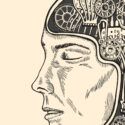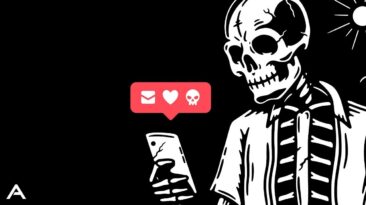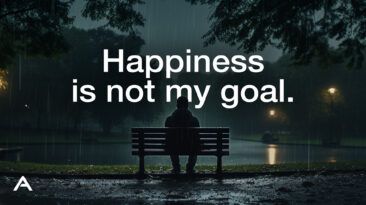What if I told you that you’re an addict and you don’t even know it? Don’t worry you’re not alone, we all are, or most of us at least. And here’s a little experiment to prove it. Once this video ends, turn off your phone and leave it in your drawer for the next 24 hours.
Do you think you can survive without it?
If you’re willing to give this experiment a try, you’re already among the few people courageous enough to do so. That, sadly, doesn’t mean it’ll be easy.
In the first few hours, you may experience a feeling of emptiness or even anxiety. You may feel your phone vibrating in your empty pocket, or you may involuntarily reach for it while you’re waiting for the bus or an elevator.
As your day progresses though, a sense of freedom should wash over you. You’ll all of a sudden be witnessing the world through new lenses so to speak. You’ll start noticing things you haven’t in a while, and your brain will be more active than it ever can be while mindlessly scrolling through social media.
When the 24 hours are over, you would have gained a new perspective on your relationship with your phone, and you may even become more aware of how much time you spend using it.
But if we’re being completely honest, chances are you’ll be back to your old habits before you know it, because like I said… you’re an addict… we all are. But our phones are not the problem, our brains are.
There’s a thin line between pleasure and pain. You’ve probably heard this before, but even if you haven’t, your brain knows this very well. At our core, we’re hard-wired to seek pleasure and avoid pain, which makes the two linked, so much so that the part or the brain that controls these two very contrasting emotions is one and the same.
In our early days as a species, differentiating between the two was often the difference between life and death. With scarce resources, our survival depended on being able to distinguish between the pleasure of having a full stomach and warm shelter, from the pain of starvation and the elements. Fortunately, times have drastically changed since then. We are now living in an era of overabundance instead of scarcity. Ideally speaking, this should make us happier, right?
Sadly, the data shows that we’re actually less and less happy. Depression levels have spiked in the last 30 years, and people in high-income countries have become less satisfied with their lives in the past decade, even though we are arguably living in humanity’s golden age.
It turns out that the reason we’re unhappy is because of this very overabundance. We’ve become addicted to the “feel good” drug that our brain naturally releases… Dopamine.
Dopamine is a neurotransmitter released in our brain whenever we’re anticipating a reward. You can say it’s arguably the most important neurotransmitter because it’s responsible for our experience of motivation, pleasure, and reward.
Going back to the thin line between pleasure and pain that we talked about earlier. The truth is it’s more of a seesaw and not a line. Your brain is constantly working to remain in a state of equilibrium called homeostasis, the balance between pleasure and pain.
So let’s say you’re scrolling through social media, and you experience something pleasurable like a cute cat video on your For You Page. Your brain will recognize that as a pleasurable experience, and release Dopamine which will tilt the seesaw towards the pleasure side. Then the balancing act begins and your brain immediately tilts the seesaw back an equal and opposite amount to the pain side in order to restore homeostasis.
This is when you start feeling restless, anxious, and unhappy. Instead of sitting with this emotion until that balance is restored, you instead decide to indulge in more cat videos to get another dose of Dopamine.
This is where Dopamine can become a double-edged sword, because just like any drug, the more your brain releases it, the less its effect, and the more your craving.
Today we have endless ways of getting that quick fix of pleasure. Almost every second of our day offers an opportunity to be stimulated, whether it’s sugar and junk food, social media, or porn, the response in our brain is the same: a dopamine hit that brings about pleasure only to be quickly followed by a balancing dose of pain, or the “come down”.
This is when our brain, in its constant effort to maintain our chemical balance, counters the massive surge of Dopamine with massive drops that can lead to a lack of motivation, anxiety, difficulty concentrating, and even depression.
Just like drug addiction, when we’re repeatedly exposed to pleasure-producing stimuli, our brains develop tolerance and then we need more and more of the drug just to tip the seesaw back and feel normal again. So we spend more and more time on our phones or indulging in junk food just to end the craving even though it’s not bringing us the same amount of pleasure anymore.
The truth is our brains aren’t equipped to deal with this overload of Dopamine that is so easily accessible today. Our brains haven’t evolved much through the centuries, but our access to pleasurable experiences has skyrocketed, which has caused us to build somewhat of an obsession with instant gratification.
According to Doctor Anna Lembke, the chief of Stanford University’s dual diagnosis addiction clinic, the problem is that we’re losing our ability to “delay gratification, solve problems, and deal with frustration”.
Our obsession with receiving constant pleasure stimuli means we now have less tolerance to pain stimuli like anxiety, stress, and restlessness. Our brains are literally becoming less equipped to deal with negative emotions.
This is why when you can’t reach for your phone you feel anxious, or why going for a walk feels like a waste of time when you could be playing video games on the couch.
Instead of processing our negative emotions and dealing with them in a healthy way, we have resorted to simple taking another hit of our naturally-released “feel good” drug. But as dark as this may seem, there is a silver lining. Natural Dopamine release in our brains is about 10 times less than the surge of Dopamine triggered by the use of most hard drugs.
Having sex, for example, releases about 200 units of Dopamine, while meth can release more than six times that amount.
THis is why a natural dopamine addiction is much easier to fix than an addiction to alcohol or drugs, even though the process is fairly similar.
So… how do you cure your dopamine addiction?
The first thing you should do is well… STOP!
Stop scrolling through social media, stop watching porn, stop eating junk food, stop seeking any form of instant gratification. Set a target for yourself, like a 30-day break from your crutch. Don’t worry, unlike with drug addiction, you won’t be abstaining forever, but this initial period is essential to rewire your brain and balance your pleasure/pain seesaw.
This is called a Dopamine detox, a form of cognitive behaviorial therapy that was developed by Dr. Cameron Sepah. Its name could be misleading because you can’t actually stop your brain from releasing Dopamine. But abstaining from the constant blast of pleasure stimuli, can help you identify unhealthy patterns and replace them with healthier ones.
Once you achieve this, you may then introduce those activities back into your life but this time in moderation.
A warning though: During your period of abstinence, you may feel anxious, irritable, or even empty, but you should embrace it. The idea is to delay gratification for as long as possible and get comfortable with being uncomfortable.
As paradoxical as it may seem, Dr. Lembke suggests actually seeking out pain instead of pleasure, it’s a stoic approach meant to make us appreciate all that we are blessed with in life. So go for a long run, take a cold shower, or maybe even read about stoic philosophy and how challenging yourself can lead to a more disciplined and satisfied life.
When we do challenging things, it has the opposite effect that instant gratification has on our brains. Instead of getting a Dopamine boost beforehand, our brain releases it after we’ve successfully completed our challenge, and this earned high is sweeter, more satisfying, and more long-lasting than instant gratification.
This may seem like a lot of hard work that requires a lot of conscious effort, but that’s the whole point… conscious effort! A big reason for our Dopamine addiction is that we unconsciously seek out pleasure-seeking stimuli because they are so easily available.
How many times have you grabbed your phone without even realizing it and found yourself scrolling through social media? How many hours have you spent scouring through Netflix late at night when all you really wanted to do was just go to bed?
If we’re going to reset our brain’s Dopamine levels, we have to actively work to make that happen.
At the end of the day, it’s only natural to pursue enjoyment, but the kind of world we’re living in today has created an expectation that we can always be happy, but the truth is we can’t and that should be fine.
Seeking out pleasurable stimuli is good, It’s the obsessive and elusive pursuit of happiness that is the real problem.
Let’s go back to our phone experiment from the beginning. Whether you’ve decided to do it or not, Its purpose wasn’t really to show you that you’re a Dopamine addict, but to help you gain some perspective on how your phone is affecting your life. This little device is a gateway to countless amounts of fun that you could enjoy with just a swipe or two. It almost feels silly not to.
But as with all things in life, there are consequences.
We’ve forgotten how to be alone with our thoughts, how to concentrate on the flow of our lives without any interruptions, and how to focus on what’s really important.
The truth is, this overabundant world we live in today means that almost all of us are addicted to something. So whatever Dopamine addiction you think you have, do you think you can cut it off for long periods of time like a day or even a month? Can you deny your natural programming, delay gratification, and seek pain instead of pleasure?
You can find out the answer to this question in a couple of seconds when this video ends and you’re left with a simple choice:
Watch another video, eat another cookie, or play another video game. Give in to the Dopamine craving that you know no longer satisfies you.
OR
You can fight the urge and go for a walk, take a cold shower, or maybe even just “be” for a minute or two without any sort of stimulation. You now know that it’s crucial for your mental seesaw, your peace of mind, and ultimately… your happiness.



















